
Several bison wander the prairie lands of McGinley Ranch on September 18, 2022. (Frank Sesno/Planet Forward)

Several bison wander the prairie lands of McGinley Ranch on September 18, 2022. (Frank Sesno/Planet Forward)
GORDON, Neb. — South Dakota State University research assistant Anlly Fresno Rueda starts lab days at McGinley Ranch with two kinds of green juice. One is a breakfast smoothie, to revitalize her body. The other is bison stomach fluid, to revitalize the ranching world.
“It looks just like this,” Fresno Rueda said, displaying the spinach smoothie at her workbench.
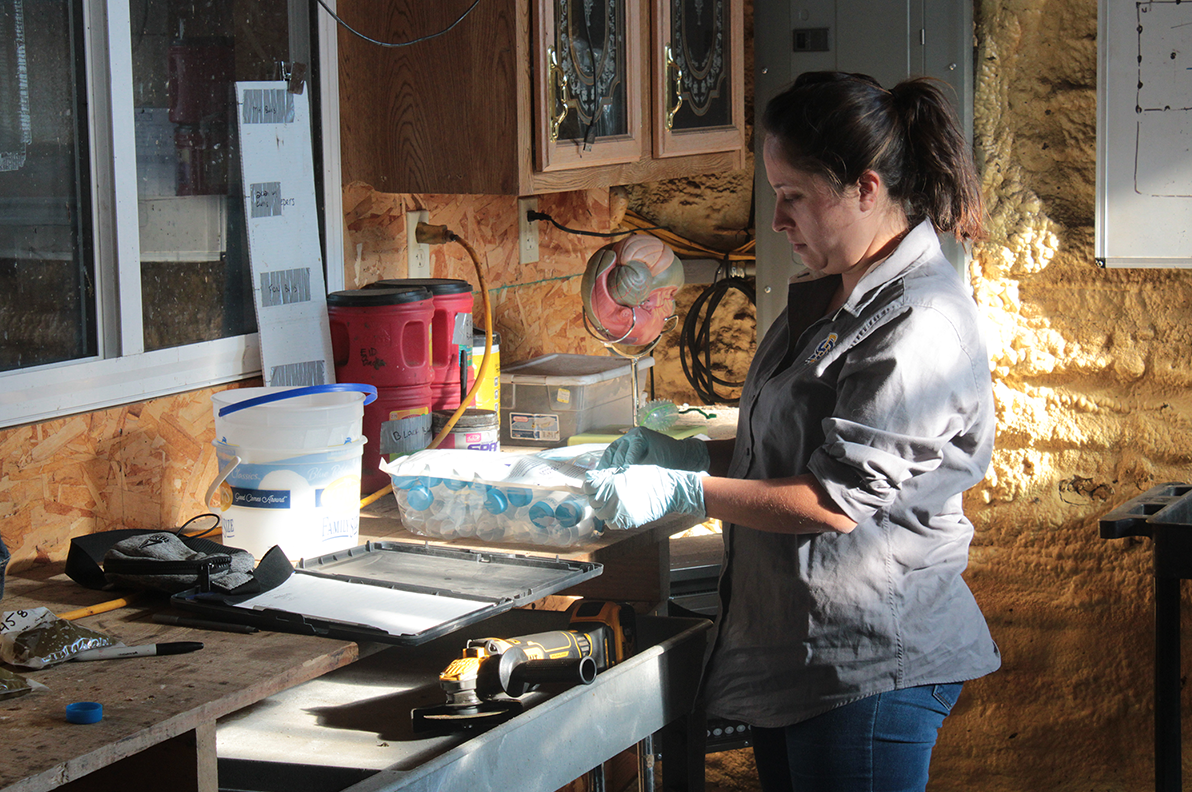
On the ranch, home to the Turner Institute for Ecoagriculture, Fresno Rueda is studying the nutrient-processing genetics of bacteria in bison rumen. The rumen is the largest compartment of the bison’s gut. It contains bacterial colonies in its fluid, which break down the animal’s natural diet of prairie grasses and vegetation.
A symbol of America’s past, the bison is gaining interest from livestock researchers as they look toward a future of declining grassland.
Since the turn of the century, extreme heat and lacking rainfall have ravaged the Great Plains. As of late September, 50% to 80% of pasture and rangeland in the Plains is rated poor- to very poor-quality as a result of drought. Two-thirds of regional cattle ranchers have reported selling parts of their herd due to inadequate feed, according to an American Farm Bureau survey.
Bison, meanwhile, demonstrate a unique resilience to climate change’s effects on their diet.
The animal belongs to a family of herbivorous mammals with multi-part stomachs, known as ruminants. Cows, sheep, goats, and yaks are also in the ruminant family. Species in this family lack the gut enzymes necessary to break down grass and instead rely on internal colonies of bacteria to aid in the process.
Bison are supported by the work of more than 116,000 kinds of bacteria, many of which are not found in other ruminants. Researchers believe genes in these microbes allow bison to digest starchy, low-nutrient plants better, and maintain weight in drought conditions for longer periods of time.
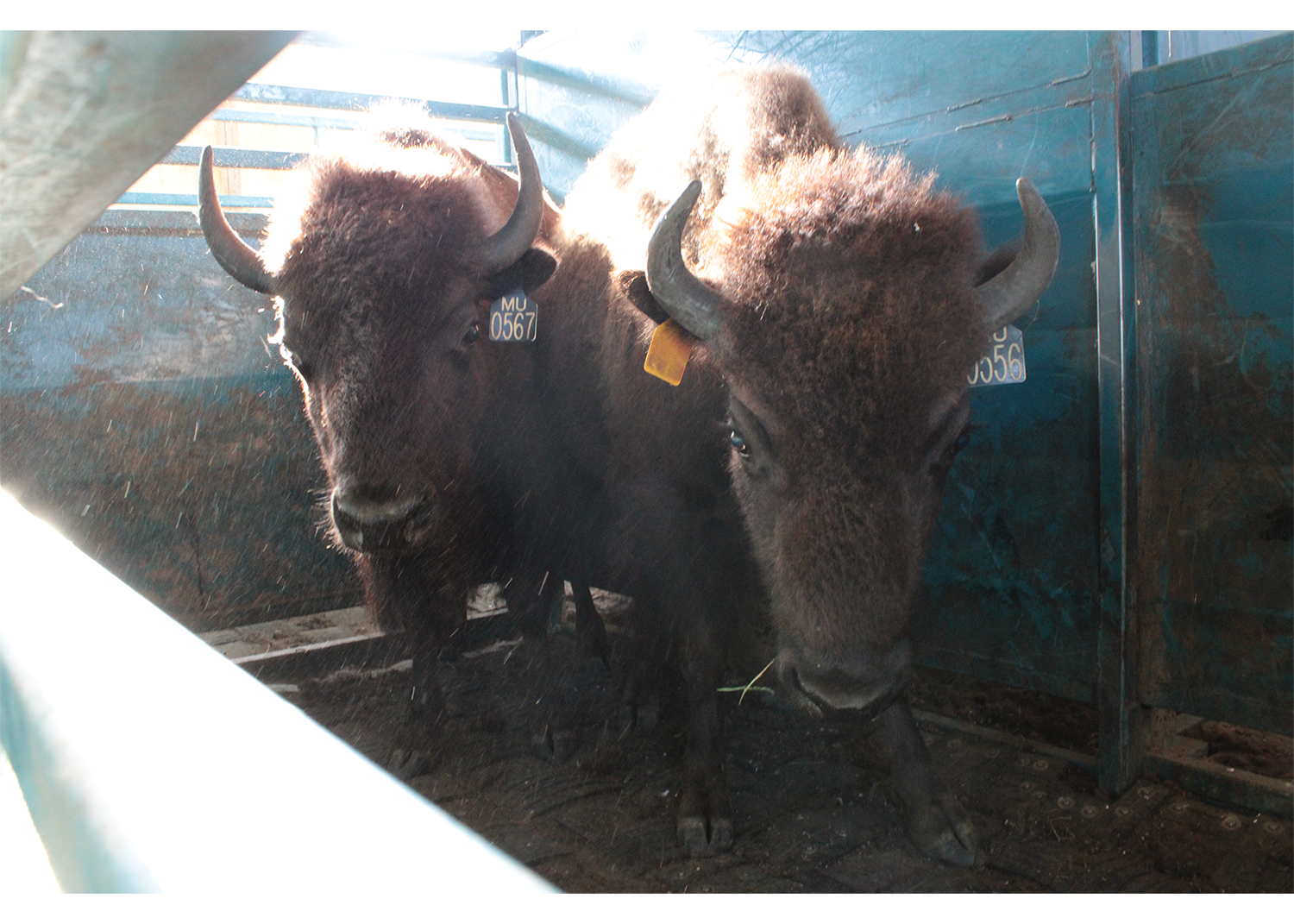
“They seem to not lose condition as quickly as other domesticated ruminants will when they’re on poor-quality forage,” said Carter Kruse, director of science and conservation with the Turner Institute for Ecoagriculture. “We think there’s some key in the bison rumen that allows them to process this forage, which could have huge implications for how we manage the animals out on the range.”
Finding helpful bacteria in this rumen would mean a higher-margin future for bison ranchers, as they spend less on supplemental feed. It may also help livestock ranchers across the industry.
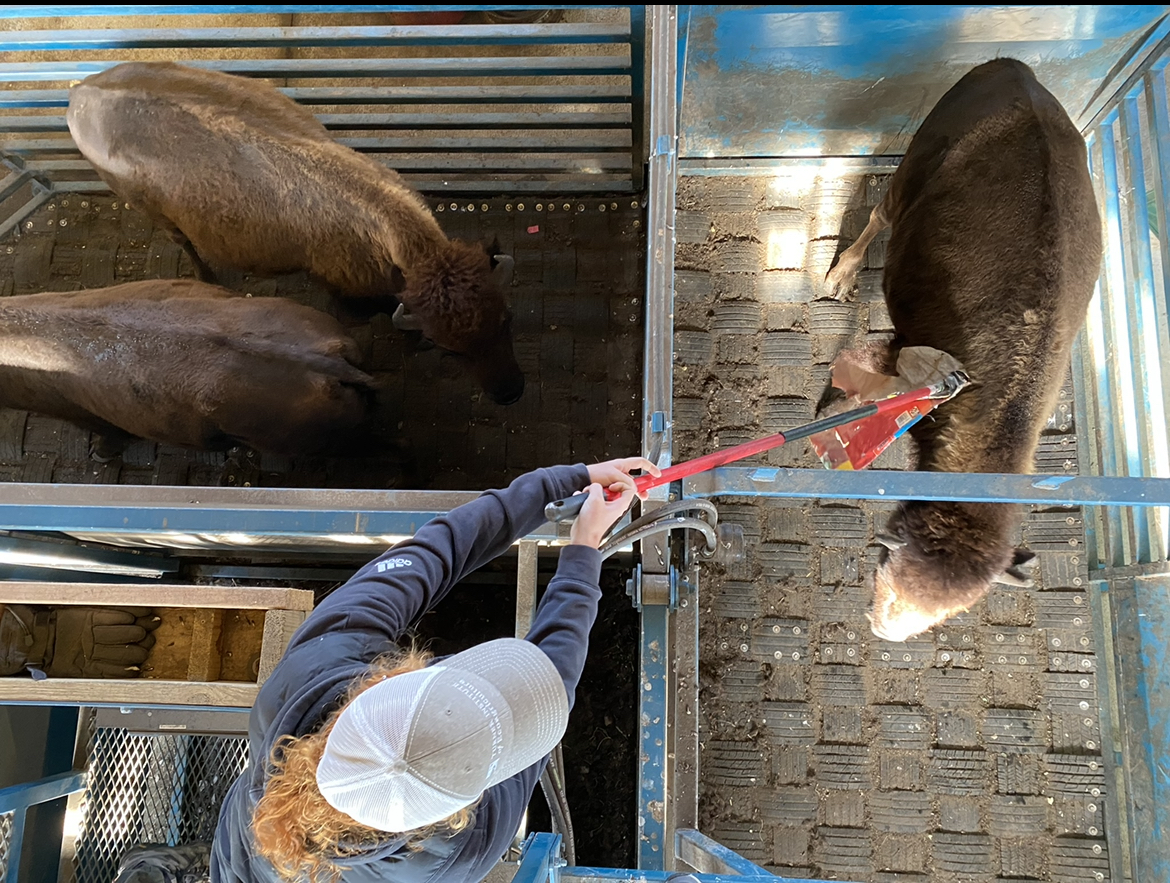
Fresno Rueda said transplanting rumen bacteria between ruminants has been done in prior study. So finding a key colony in bison could help other livestock survive on nutrient-poor grasses for longer periods of time, as well.
“If we identify beneficial bacteria, some of the things we can do with them are create products, or prebiotics, or probiotics,” the research assistant said. “It’s not just going to be for the bison. These will be for goats, and sheep, and cattle.”
According to Fresno Rueda, bison rumen bacteria have less than 90% genetic resemblance to bacteria from other ruminants.
“We don’t really know what they are,” she said.
Finding out is somewhat of a messy process. And it all happens in a white bison shed, the research team’s lab at McGinley Ranch.
Inside is a maze of blue-painted gates and pens, with cut-up tire flooring and wooden platforms placed above them. On this mid-September sampling day, three bison had been wrangled into a holding chamber. They snorted and rattled barrier rails with their flanks. The shed smelled of manure, sulphuric bile, and wood chips.
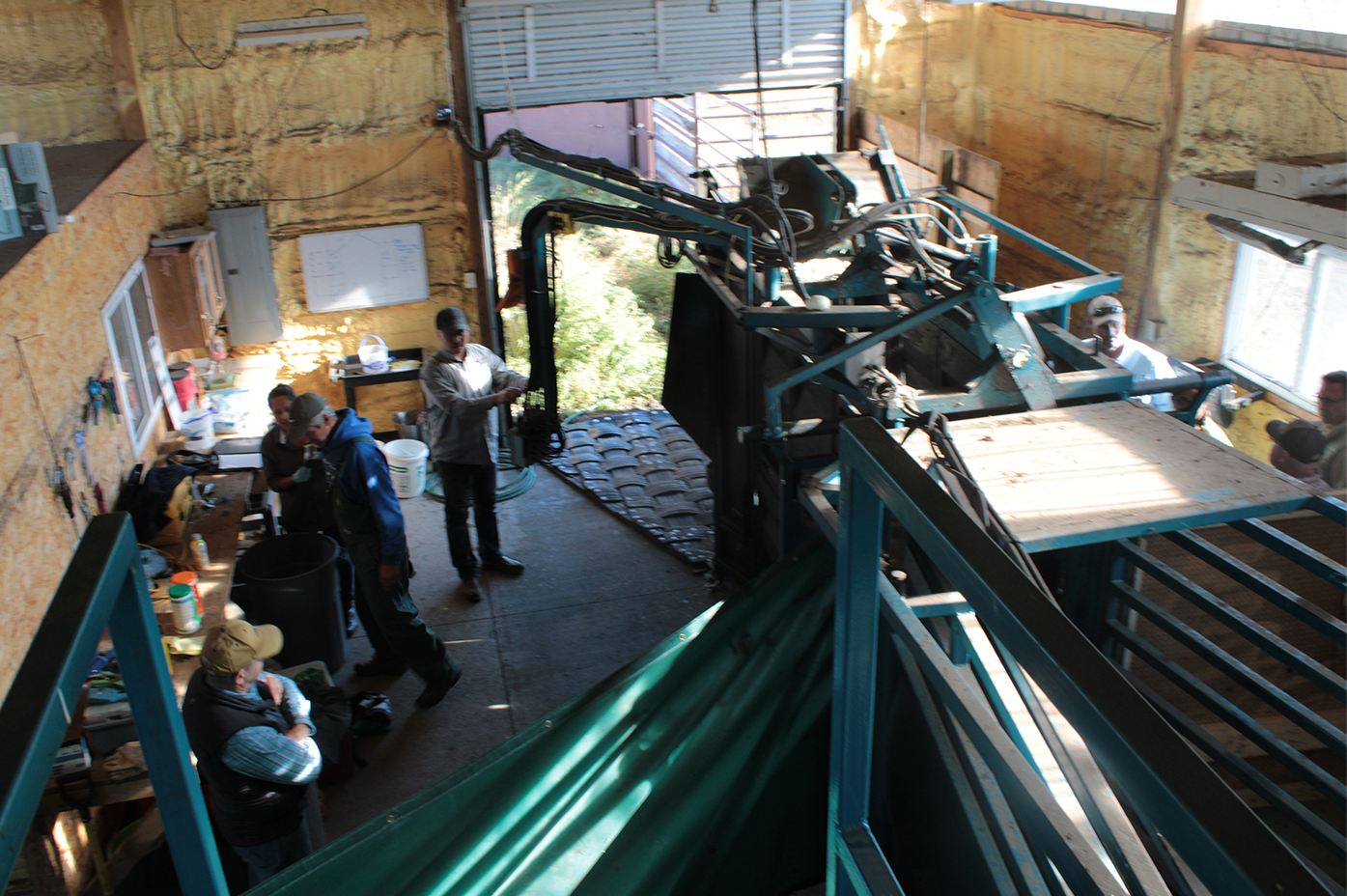
A ranch technician led one bison through a corridor of pens with a flagpole until it arrived in the bison chute, a shipping container-like chamber. With the press of a button, the researchers applied gentle hydraulic pressure to hold the bison in place.
At one end, Kruse inserted a hand into the bison’s rectum for a fecal sample before bagging it and bringing it to Fresno Rueda. At the other, Turner Institute of Ecoagriculture veterinarian Tom Bragg maneuvered a metal pipe into the bison’s mouth, before inserting a length of plastic tubing.
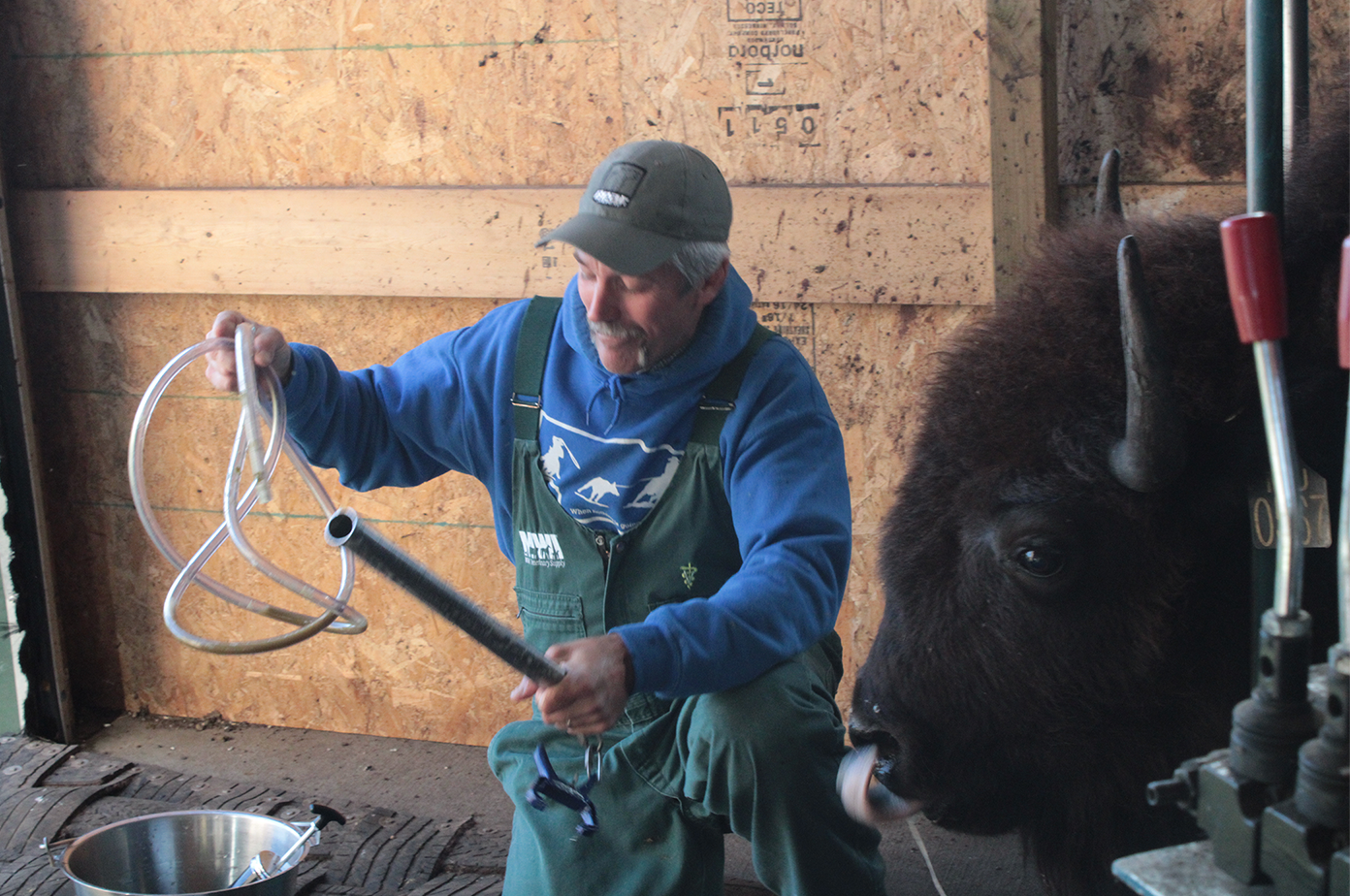
“This tube is curved at the end,” Bragg said. “So once we get it into their mouth, they swallow it, and it makes collection easy.”
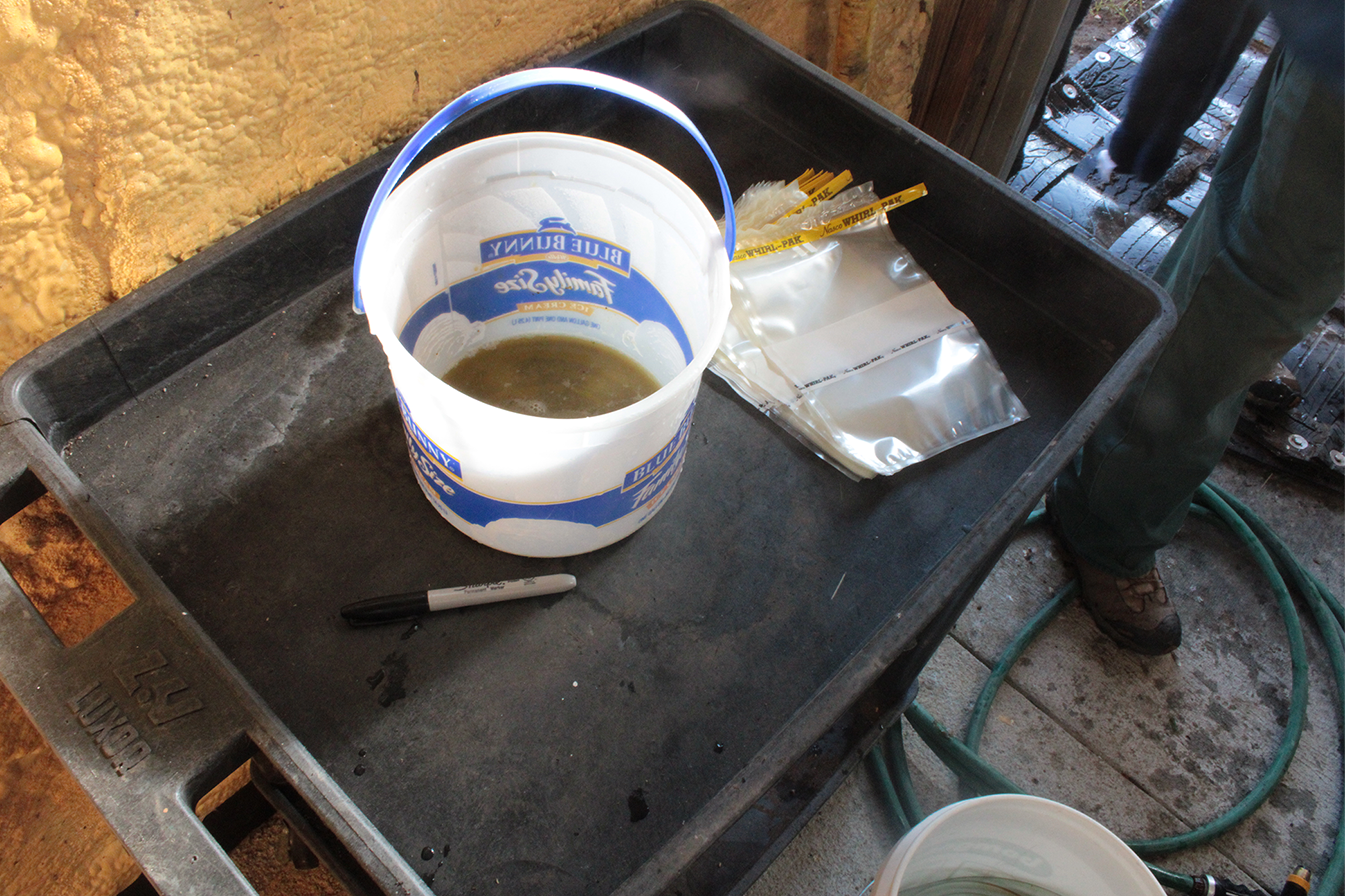
On cue, the bison shook its head and olive-green rumen fluid flowed through the tube into a plastic bucket. Fresno Rueda paced the room with purpose, occasionally draining samples into test tubes and documenting them.
When work was complete, Fresno Rueda and Kruse loaded their materials for a return trip to their lab in SDSU’s Animal Science Department. They planned to break open the bacteria and extract the DNA with a soap solution and high-speed test tube shaker. Then, the research team would analyze bacterial DNA chunks for their function.
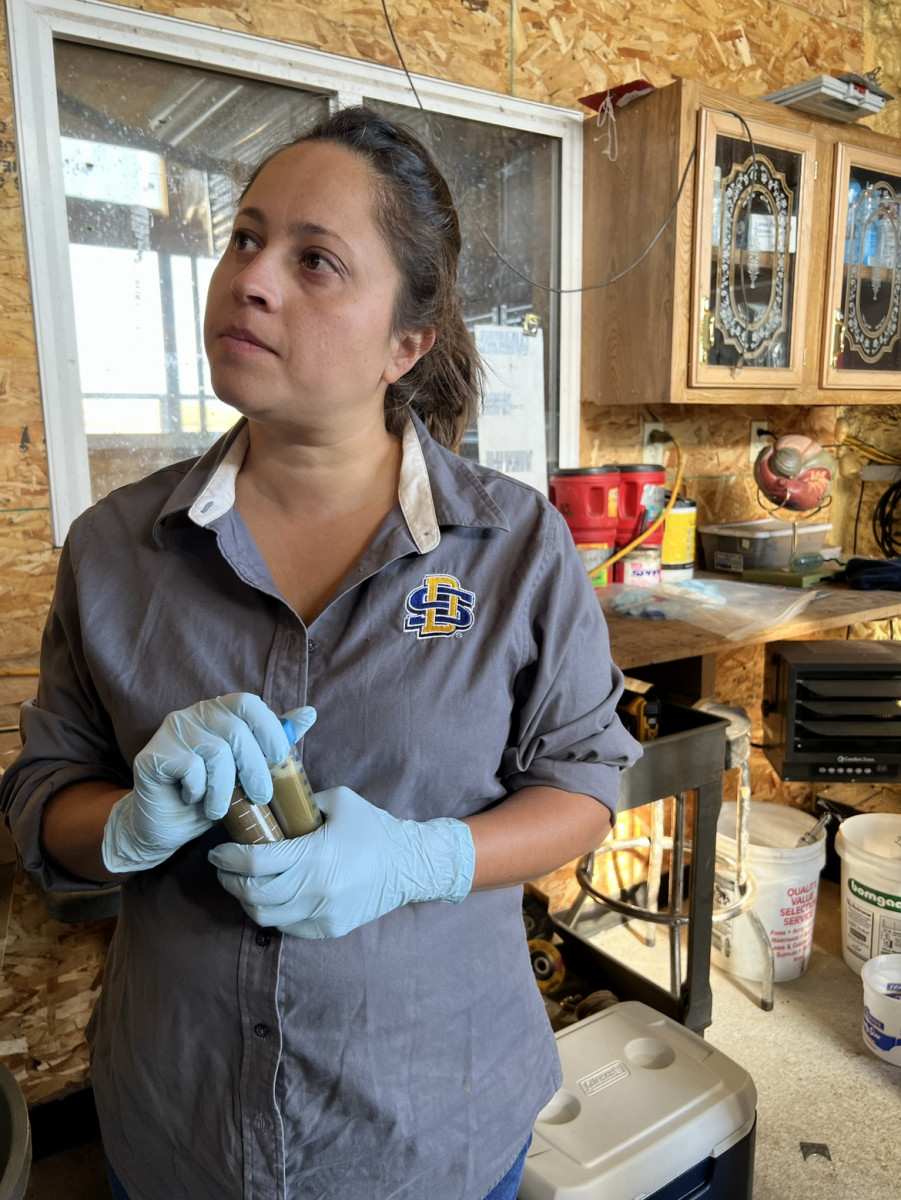
“Right now, we’re just in the process of finding out what is there,” Fresno Rueda said.
While Fresno Rueda has two years left to complete her research, the promise of a viable probiotic is at least three years down the road.
Still, initial findings have the researchers hopeful for a more robust grass-fed meat market.
“If we show producers that grass-fed animals are healthier, higher-profit, and better for the environment, they will market it better as an alternative,” Fresno Rueda said. “It’s a win-win.”